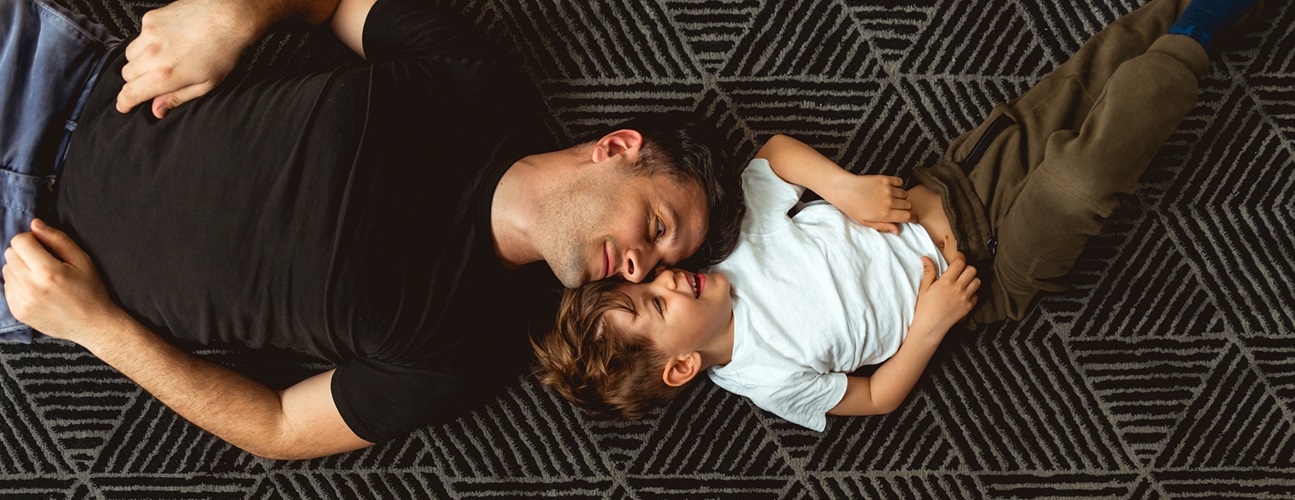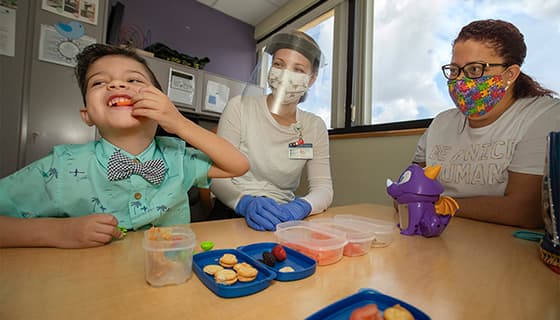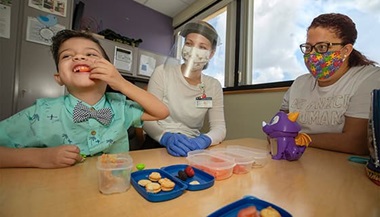5 Coronavirus Coping Tips for Parents of Children on the Autism Spectrum
Reviewed By:
Most families that have a member with autism spectrum disorder (ASD) have been directly impacted by the coronavirus (COVID-19) pandemic. Routines and available services are disrupted. Schools are closed, connections with service providers are lost and everyone is concern about contracting the virus.
Coping with the anxiety and uncertainty that we are feeling during this time is something all parents will need to address with their children. Below are five tips from Lauren Gardner, Ph.D., administrative director of the Autism Program at Johns Hopkins All Children’s Hospital, for caregivers of individuals specifically with ASD to increase their child’s understanding and positive coping during this time.
-
Support understanding with visual aids and social narratives
-
Explain expectations and new social rules for COVID-19
-
Provide structure and routine
-
Facilitate positive coping and calming strategies
-
Monitor for changes in behavior
To support individuals with ASD understanding about COVID-19, communication is best when paired with visual aids or social narratives (simple stories explaining a social situation). These techniques will allow the person with autism the opportunity to process information in multiple formats given potential receptive communication deficits. Our hand-washing infographic and coronavirus at-a-glance infographic provide visual stories to share.
Talk with your child about new social expectations and rules for safe distancing when interacting with others. Use clear, concrete language to discuss the “rules” for how to greet others, maintain personal space and hand washing. Visual aids may be helpful to explain these new procedures to assist in understanding.
Children and adolescents with autism function best when provided with a structured routine that allows for them to anticipate what may come next in the day. As much as possible, follow previously established routines related to sleep/waking times, and completing household chores and activities of daily living. A visual schedule will help your child understand the new structure of their daily routine at home. It is appropriate to include limited screen time within the daily schedule, but be sure to provide transition warnings and visual countdowns when transitioning away from highly preferred activities.
Coping with the anxiety and uncertainty that we are all feeling during this time is something all parents will need to address with their children. If your child has calming and coping strategies that are effective in other stressful situations, providing him or her with a list of choices for calming during these stressful times will help with self-regulation and managing anxiety. Choices may include physical exercise, deep breathing, accessing a favorite activity or listening to music. When you are leaving home, allow your child to bring a favorite toy or preferred item for comfort.
Children with autism often have difficulties expressing their emotions including fear, frustration and anxiety. Difficulties in expressive communication may be compounded by expressive communication delays, limited verbal and nonverbal skills and social communication deficits. They may communicate heightened emotions through changes in behavior including increased repetitive behaviors, tantrums and behavioral outbursts, difficulty following directions and a lower frustration tolerance.
Provide opportunities for your child to engage in coping and calming strategies that they find helpful. If significant behavioral changes occur, additional support from a behavioral therapist, mental health or medical provider may be needed.
Now and always, remember to applaud your kids being good and provide lots of praise for positive behaviors at home and in public. Be easy on yourself and practice self-care.







